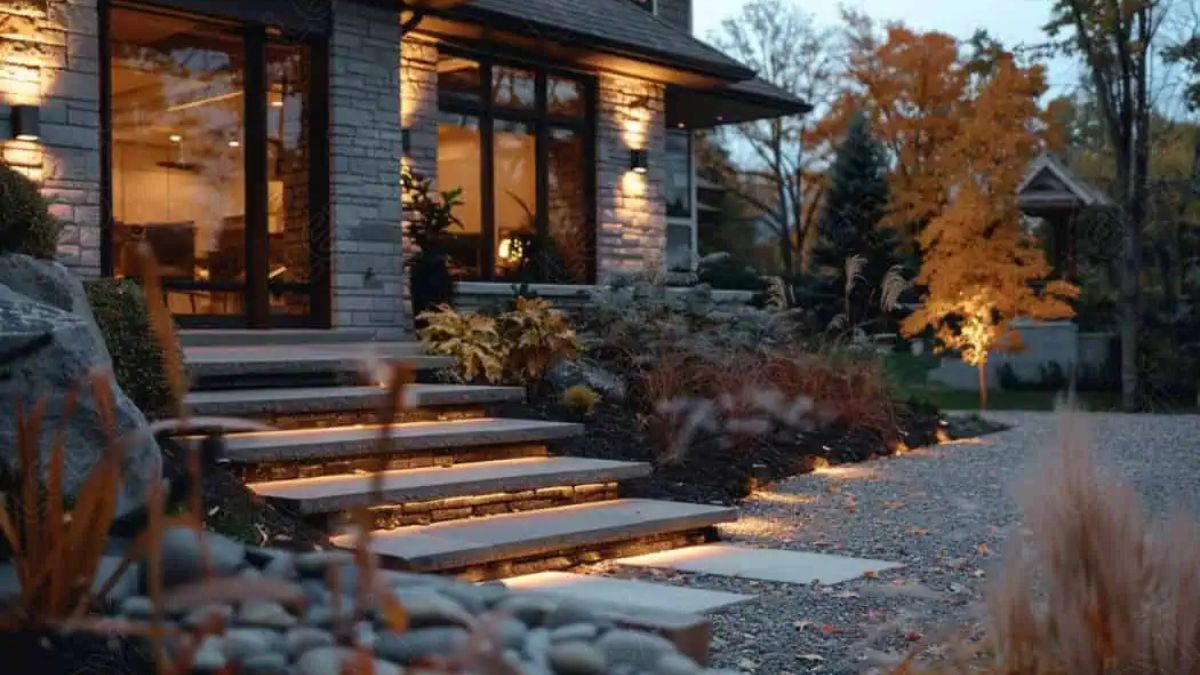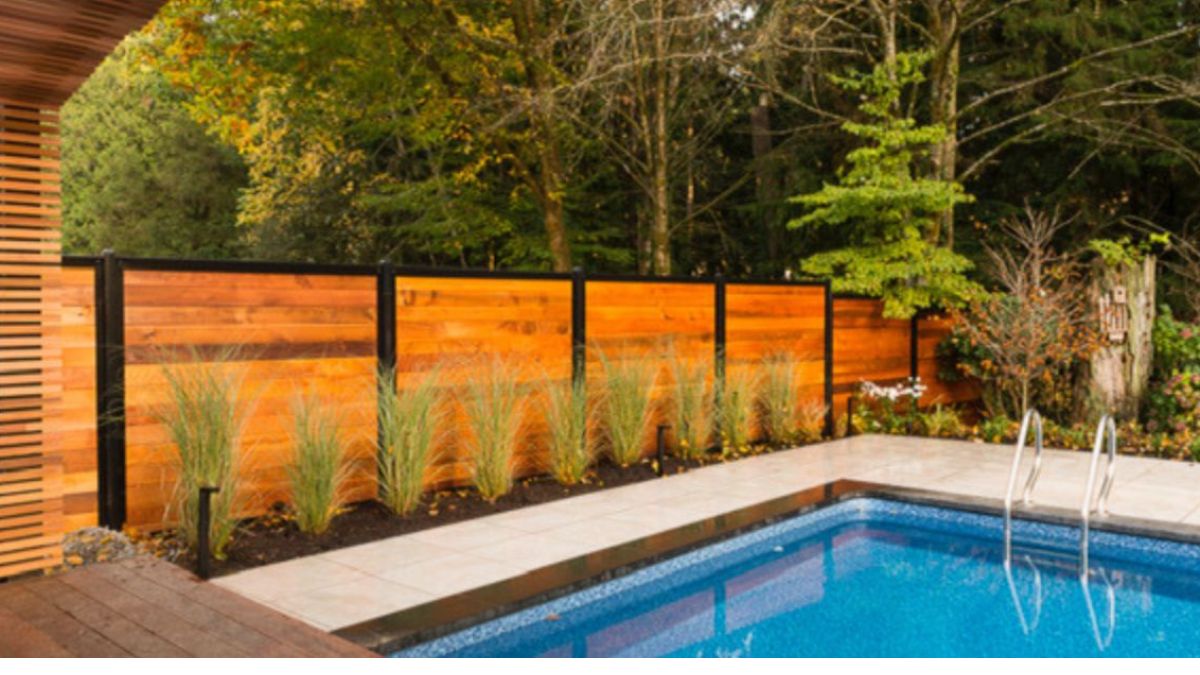HOME IMPROVEMENT
LED Porch Lights: Transform Your Home’s Entrance

Lighting a warm and inviting entrance to your home starts with proper lighting, and LED porch lights have revolutionized the way we illuminate our home’s entryways. From enhanced security to energy savings, these modern lighting solutions offer numerous benefits that make them an increasingly popular choice for homeowners. Let’s explore everything you need to know about selecting, installing, and maintaining the perfect LED porch lights for your home.
Benefits LED Porch Lights
The transition from traditional porch lighting to LED technology represents a significant upgrade in both functionality and efficiency. LED porch lights have become the go-to choice for homeowners looking to enhance their home’s curb appeal while enjoying practical benefits that extend far beyond simple illumination.
Energy Efficiency That Makes a Difference
One of the most compelling reasons to switch to LED porch lights is their remarkable energy efficiency. These innovative fixtures typically consume up to 75% less electricity than their traditional counterparts. To put this into perspective, a 15-watt LED porch light can produce the same amount of illumination as a 100-watt incandescent bulb. This dramatic reduction in energy usage not only helps reduce your carbon footprint but also leads to significant savings on your monthly electricity bills.
Longevity You Can Count On
When it comes to durability and lifespan, LED porch lights truly stand out from the crowd. While traditional bulbs might need replacement every few months or years, quality LED fixtures can last anywhere from 25,000 to 50,000 hours – that’s roughly 15 to 25 years of normal evening use. This extended lifespan means fewer replacements and lower maintenance costs over time.
Weather-Resistant Design
Modern LED porch lights are engineered to withstand various weather conditions, making them perfect for outdoor installation. Most models feature:
- Durable aluminum or brass construction
- Weather-resistant seals and gaskets
- UV-resistant materials
- Corrosion-resistant finishes
These features ensure your porch lights maintain their appearance and functionality regardless of rain, snow, or intense sunlight.
Choosing the Perfect LED Porch Lights
Selecting the right LED porch lights involves considering several key factors that will affect both their functionality and appearance.
Style and Aesthetics
Your porch lights play a crucial role in your home’s overall appearance. Available styles include:
Traditional Lanterns These classic designs complement colonial, craftsman, and traditional home architectures while incorporating modern LED technology.
Contemporary Fixtures Sleek, minimalist designs that work well with modern and contemporary home styles, often featuring clean lines and innovative materials.
Transitional Options These versatile fixtures bridge the gap between traditional and modern styles, offering broad appeal and adaptability to various architectural designs.
Light Output and Coverage
Understanding light output is crucial for selecting the right LED porch lights. Consider these factors:
Brightness Levels Most residential porch applications require between 800 and 1,600 lumens, depending on the size of your porch and your specific needs. For reference:
- Small porches: 800-1,000 lumens
- Medium porches: 1,000-1,400 lumens
- Large porches: 1,400-1,600+ lumens
Color Temperature The color temperature of your LED porch lights significantly affects the atmosphere they create:
- Warm White (2700K-3000K): Creates a cozy, welcoming atmosphere
- Neutral White (3500K-4000K): Provides natural-looking light
- Cool White (5000K-6500K): Offers maximum visibility
Smart Features and Functionality
Today’s LED porch lights often come equipped with innovative features that enhance their utility:
Motion Sensors Built-in motion detection can automatically illuminate your porch when someone approaches, improving both convenience and security.
Dusk-to-Dawn Sensors These sensors automatically turn lights on at sunset and off at sunrise, ensuring your porch is always properly lit when needed.
Smart Home Integration Many modern LED porch lights can connect to your home’s smart system, allowing for:
- Remote control via smartphone apps
- Programmable schedules
- Integration with other smart home devices
- Voice control through virtual assistants
Installation Considerations
Proper installation ensures optimal performance and longevity of your LED porch lights.
Professional vs. DIY Installation
While many homeowners can successfully install LED porch lights themselves, consider these factors when deciding whether to hire a professional:
Technical Requirements
- Electrical knowledge needed
- Wiring compatibility
- Local building codes
- Height and accessibility of installation location
Safety Considerations
- Working with electricity
- Ladder safety
- Weather conditions during installation
- Proper tools and equipment
Maintenance and Care
Although LED porch lights require minimal maintenance, following these care tips can help extend their lifespan:
Regular Cleaning
- Dust and clean fixtures every few months
- Use a soft, damp cloth to wipe down surfaces
- Check for spider webs and insect nests
- Clean light sensors if equipped
Periodic Inspection
- Check for loose connections
- Inspect weather seals
- Look for signs of water damage
- Test motion sensors and other features
Cost Considerations
Understanding the financial aspects of LED porch lights helps make an informed decision.
Initial Investment While LED porch lights may cost more upfront than traditional options, consider these factors:
- Quality of construction
- Feature set
- Brand reputation
- Warranty coverage
Long-term Value The true value of LED porch lights becomes apparent when considering:
- Reduced energy costs
- Lower maintenance expenses
- Fewer replacement needs
- Potential increase in home value
Energy Savings Calculator To estimate your potential savings, consider this simple calculation:
- Compare wattage difference between LED and traditional bulbs
- Multiply by average hours of use per day
- Calculate annual energy savings
- Factor in bulb replacement costs
Common Challenges and Solutions
Understanding potential issues can help you make better decisions about your LED porch lights.
Light Distribution Challenge: Uneven lighting or dark spots Solution: Choose fixtures with appropriate light distribution patterns and consider multiple lights for larger areas
Color Consistency Challenge: Different light colors between fixtures Solution: Purchase lights from the same manufacturer and series to ensure consistent color temperature
Motion Sensor Adjustment Challenge: False triggers or missed motion Solution: Adjust sensitivity settings and sensor direction as needed
Environmental Impact
Choosing LED porch lights contributes to environmental sustainability in several ways:
Energy Conservation
- Reduced electricity consumption
- Lower carbon emissions
- Less strain on power grids
Reduced Waste
- Longer lifespan means fewer replacements
- Many components are recyclable
- Less packaging waste over time
Light Pollution Reduction
- Better light direction and control
- Reduced impact on wildlife
- Less spillover into neighboring properties
Future Trends in LED Porch Lighting
The technology behind LED porch lights continues to evolve, bringing exciting new possibilities:
Advanced Integration
- Improved smart home connectivity
- Enhanced security features
- Better energy management
Improved Efficiency
- Higher lumens per watt
- Better heat management
- More durable components
Design Innovation
- New styles and finishes
- Customizable options
- Improved aesthetics
Making the Switch to LED Porch Lights
If you’re considering upgrading to LED porch lights, follow these steps:
- Assess Your Needs
- Measure your porch area
- Determine desired light output
- Consider existing wiring
- Evaluate style preferences
- Research Options
- Compare different models
- Read customer reviews
- Check warranty coverage
- Verify compatibility
- Plan Installation
- Decide on DIY or professional installation
- Gather necessary tools and materials
- Check local regulations
- Schedule installation during good weather
- Maintain and Monitor
- Keep installation records
- Monitor energy savings
- Perform regular maintenance
- Address issues promptly
Conclusion
LED porch lights represent a significant advancement in home lighting technology, offering an impressive combination of efficiency, durability, and style. Whether you’re looking to enhance your home’s security, reduce energy costs, or simply create a more welcoming entrance, these modern lighting solutions provide reliable performance and long-term value.
The initial investment in quality LED porch lights pays dividends through reduced energy consumption, minimal maintenance requirements, and improved lighting quality. As technology continues to advance, these lighting solutions will only become more efficient and feature-rich, making them an increasingly attractive option for homeowners looking to upgrade their outdoor lighting.
HOME IMPROVEMENT
Glazing Trends for Residential Spaces: Transforming Homes with Innovative Glass Solutions

Introduction to Residential Glass Trends
In the ever-evolving field of home design, glass has consistently played a significant role, offering unparalleled versatility and charm. Whether it’s about enhancing daylight, creating visual continuity, or boosting energy efficiency, glass solutions are celebrated for their multifaceted benefits. The modern push towards sustainable and energy-efficient designs has further propelled glass into the spotlight. As fashionable as it is functional, glass transforms residential spaces, melding aesthetics with practicality. Whether renovating or building anew, the options for incorporating glass are nearly endless. For those looking to explore these diverse possibilities, https://www.kennedyglass.com/residential/ provides an extensive array of glass solutions adaptable to various design needs.
The Rise of Energy-Efficient Windows
The growing demand for sustainability in the residential sector has put energy-efficient windows at the forefront of home improvement strategies. Today’s homeowners are increasingly aware of these windows’ dual benefits: reduced energy costs and improved indoor comfort. Innovations such as low-emissivity (low-E) glass coatings, argon gas insulation, and double or triple-glazed windows reduce heat transfer, maintaining warmer temperatures in winter and cooler conditions in summer. By putting in these windows, homes can significantly reduce their energy expenses. According to the U.S. Department of Energy, upgrading advanced glazing systems can dramatically reduce overall energy consumption, making it a worthwhile investment.
Decorative Glass: Adding Style and Privacy
Decorative glass offers a splendid solution for homeowners wanting to balance light, privacy, and style. In myriad textures, colors, and patterns, decorative glass can transform mundane spaces into stunning art features. The aesthetic choices are virtually limitless, whether delicately frosted glass for a bathroom window or vibrant stained glass for an entryway. Beyond its beauty, decorative glass provides practical benefits. It allows natural light to filter through while keeping prying eyes at bay, making it an ideal choice for privacy-focused areas without sacrificing illumination. For design enthusiasts, decorative glass presents an opportunity to personalize and elevate the charm of their interiors.
Smart Glass Technologies in Modern Homes
Smart glass represents the exciting convergence of technology and design, offering homeowners innovative ways to control light and privacy. This glass can change properties responding to electrical, thermal, or light stimuli, providing customizable transparency levels. Imagine windows that darken or lighten at your command—or even automatically—adapting to external light conditions quickly. This adaptability enhances privacy and offers energy savings by moderating indoor temperatures. Electrochromic glass stands out for its capability to alternate between transparent and opaque conditions, transforming the conventional ideas of windows and walls. These characteristics render smart glass an intriguing enhancement to modern and progressive residences.
Applications of Glazing in Different Home Areas
The possibilities are expansive and exciting when choosing where to incorporate glass within a home. Kitchens, for example, benefit from glass cabinetry that allows for the display of chic dinnerware. Glass backsplashes can act as striking centerpieces, reflecting light to make cooking areas appear larger and brighter. Bathrooms with glass shower enclosures exude a spa-like vibe while keeping water confined to the desired spaces. In living rooms, expansive glass panels dramatically blur the line between indoor and outdoor environments, inviting natural scenery into the living space. Moreover, sliding glass doors are perfect for spaces with access to patios or gardens, offering stunning views and seamless flow. The careful choice and arrangement of glass details can significantly transform living areas.
Sustainability and Environmental Impact
Glass is gradually emerging as a key player in the sustainable architecture movement. Its contributions go beyond aesthetics and energy efficiency, fundamentally supporting eco-friendly building practices. Glass production has become more sustainable, with recyclable options reducing waste. Additionally, using energy-efficient glass products contributes to less greenhouse gas emissions, aligning with global goals for environmental conservation. The significant advantages of using glass encompass immediate energy savings and broader environmental effects, positioning it as a wise option for innovative homeowners. As consciousness increases, the need for eco-friendly glazing options is expected to grow, creating more sustainable living spaces.
Innovations on the Horizon
The glass sector is bursting with creativity, offering thrilling developments that address the changing requirements of contemporary households. Photovoltaic glass, for example, can convert windows into energy-producing surfaces, effortlessly incorporating photovoltaic technology while maintaining aesthetic appeal. Advanced glazing solutions are continuously refined to provide excellent insulation, clarity, and durability. As noted by ArchDaily, these innovations are not just technical advancements; they represent new possibilities for how living spaces can be conceived and constructed. With such innovations, residential glass’s future is bright and brimming with potential.
Summary of Key Points
The dynamic world of residential glazing offers myriad opportunities to enhance homes’ design and efficiency. The options are endless and constantly evolving, from energy-efficient windows and innovative smart glass technologies to the versatile applications of decorative glass. Sustainability remains a central theme, with glass products helping to reduce environmental impact while boosting home aesthetics and comfort. As these trends develop, informed homeowners will be well-positioned to integrate the latest glass technologies into their living spaces, ensuring an ideal balance of style, functionality, and ecological responsibility. The future of home design lies in embracing these glazing innovations, promising a harmonious blend of beauty and practicality.
HOME IMPROVEMENT
Increase Home Value with Smart Construction Techniques

The Basics of Smart Construction
In an ever-evolving housing market, smart construction techniques have emerged as a pivotal element in increasing home value. These innovative approaches integrate advanced construction methods and new technologies that enhance property worth while providing superb living conditions. The idea is to optimize the building process to create homes that are not just for living but also function as long-term investments. Key players in the industry, such as commercial contractors Denver, are at the forefront of these practices, ensuring an edge over traditional construction methods. By embracing intelligent design principles, construction professionals are able to craft homes that are both aesthetically pleasing and highly functional.
Commercial contractors in Denver specialize in overseeing and completing major construction projects, including office complexes and commercial establishments. They bring together skilled teams to ensure that every project meets its timeline and budget. As the industry grows in Denver, contractors are increasingly focusing on efficiency, sustainability, and innovative design.
Sustainable Materials Make a Difference
Using eco-friendly materials is a hallmark of smart construction. Sustainability is not merely a buzzword; it’s a crucial component in crafting homes that stand the test of time. These materials, ranging from bamboo flooring to recycled steel, not only reduce environmental impact but also improve a home’s energy efficiency and indoor air quality. By choosing materials wisely, homeowners can significantly impact their ecological footprint while enhancing their property’s value. According to architecture experts, sustainable practices can reduce energy consumption, allowing homeowners to enjoy significant savings in utilities over the years.
Leveraging Technology in Construction
The integration of technology into the construction process and home design has revolutionized the way we live. Smart home technology, ranging from automated lighting systems to AI-based security features, offers convenience and peace of mind. These technologies make homes more attractive to potential buyers, who are increasingly expecting technological sophistication as a standard feature. Staying informed about the latest smart home trends helps homeowners and builders alike craft spaces that are well-aligned with future living standards, enhancing both immediate satisfaction and long-term property value.
Cost-Efficient Construction Choices
Despite the higher initial costs associated with smart construction techniques, the return on investment is significant when measured over the home’s life. Energy-efficient appliances, superior insulation, and other technological advancements help reduce utility bills, thus offsetting upfront costs. Simple upgrades, like high-efficiency windows or energy-saving light systems, offer immediate reductions in monthly energy expenses, making these cost-efficient choices a wise investment in property enhancement.
The Role of Energy Efficiency
Energy efficiency is a central pillar of smart construction efforts. With the global shift towards greener energy solutions, homes that adopt these methods contribute to environmental conservation and increase their appeal in the property market. Energy-efficient homes feature better insulation, energy-saving appliances, and systems designed to minimize waste. By investing in these features, homeowners benefit from lower energy bills and possibly qualify for tax incentives and rebates, further increasing the financial attractiveness of sustainable home choices.
Customization and Personalization in Newly Built Homes
As more homebuyers seek spaces tailored to their unique needs, the trend of customization in smart construction continues to gain traction. This personalization allows homeowners to inform the design process, opting for floor plans and features that match their lifestyles. Whether it’s a dedicated home office or a personalized kitchen layout, customization enhances living spaces and significantly boosts market value, as potential buyers appreciate homes specifically designed for versatile living.
Considering the Future Buyer
Understanding future market trends is essential for making smart construction choices that retain value. By focusing on adaptable layouts and designs, homeowners can ensure their property remains appealing to a broad range of buyers. This flexibility involves anticipating lifestyle trends, such as increasing work-from-home arrangements and providing spaces that efficiently cater to these shifts. Flexible designs attract a wider demographic and ensure the home can easily evolve with changing buyer demands.
Smart Construction Case Studies
Real-world examples illustrate the substantial benefits of investing in smart construction techniques. Homes that incorporated these advancements have been shown to sell quicker and at a premium compared to traditional designs. Case studies highlight the increased property value and buyer interest when intelligent building techniques are employed, affirming the practical and economic advantages of smart construction investments.
HOME IMPROVEMENT
Transforming Outdoor Spaces: The Art and Impact of Wood Fence Design

Introduction
Wood fences have been a stalwart choice for homeowners seeking to blend beauty with functionality. Historically, these structures served as barriers for delimiting space, safeguarding premises, and offering a sense of solitude amidst urban hustle. Modern settings remain incredibly relevant, providing privacy in bustling residential areas and enhancing the aesthetic value of properties. Homeowners considering a wood fence installation Houston TX, or elsewhere will discover that such installations upgrade outdoor spaces and contribute to overall property appeal and worth.
Understanding wood fence design opens a realm of possibilities for personalizing landscapes. Homeowners ensure that their fences stand out aesthetically and functionally by focusing on the benefits, choosing the right materials, and exploring diverse design ideas. This comprehensive approach promises immediate benefits, lasting beauty, and satisfaction.
The Role of Wood Fences in Outdoor Design
Wood fences have evolved beyond their primary function of creating borders and providing security. Today, they are essential in landscape design, reflecting personal style while enhancing a property’s exterior charm. Providing a structured backdrop allows for cultivating various garden themes, be it a rustic countryside, a sleek modern setup, or a classic Victorian garden. Adapting to different architectural styles and landscape designs makes wood fences highly versatile.
Benefits of Well-Designed Wood Fences
Installing a well-designed wood fence brings numerous benefits. Beyond defining boundaries, these fences reduce noise, a crucial feature for homes near busy streets or noisy neighbors. They also enhance privacy and security, providing peace of mind for families. From an investment perspective, a tastefully crafted wood fence can significantly increase a property’s market value. Wood’s inherent elegance lends a classic look that goes well with any landscape, making it a popular option for homeowners looking for both design and functionality.
Materials for Wood Fence Construction
The choice of material significantly affects a fence’s longevity and appearance. Cedar and redwood are favored for their aesthetic appeal and natural resistance to decay and pests. Cedar, known for its robust aroma and fine grain, naturally repels insects, while redwood possesses stunning color variations, from light pinkish-brown to deep reddish-brown, and offers considerable durability. Pine, albeit a softer wood, is often chosen for budget-conscious projects and can extend its lifespan when treated with preservatives.
To make informed decisions about the best materials for wood fence construction, it’s beneficial to explore more about materials used in construction, ensuring the choices align with both environmental conditions and aesthetic preferences.
Creative Design Ideas for Wood Fences
Creativity is vital in transforming wood fences into artistic expressions that complement and enhance outdoor spaces. Whether you prefer the classic charm of a white-picket fence or the modern allure of horizontal slats, there are numerous styles to explore. Adding ornamental features like elaborate carvings or lattice tops can add sophistication and elegance. Consider integrating elements like climbing plants or bright lighting, which transform a fence into a dynamic part of your garden, providing functionality and beauty.
Maintenance Tips for Long-Lasting Fences
Regular maintenance is essential to ensure your wood fence remains in peak condition. This involves periodic cleaning to remove dirt and mildew, applying protective sealants to prevent moisture damage, and conducting inspections to address issues such as warping or pest infestation. Staining or painting the wood every few years protects it from UV rays and extends its lifespan. With vigilant care, a wood fence retains its beauty and has served its structural purpose for decades.
Future Trends in Wood Fence Design
Emerging trends in wood fence design lead to greater sustainability and innovation. There’s a notable shift towards materials that integrate renewable energy solutions, such as solar-powered lighting or integrated smart device controls, enhancing functionality while reducing environmental impact. Additionally, aesthetic trends lean towards designs that reflect minimalism and eco-friendly living, using naturally treated wood and sustainable design practices. These trends promise to blend traditional craftsmanship with cutting-edge technology, meeting the demands of modern lifestyles.
-

 BLOG1 month ago
BLOG1 month agoIZoneMedia360 .Com: Exploring the Features and Benefits
-

 BLOG5 months ago
BLOG5 months agoAbout Blog TurboGeekOrg: A Go-To Hub for Tech Enthusiasts and Latest Innovations
-

 BLOG5 months ago
BLOG5 months agoWhat is a Golden Transit in Magi Astrology?
-

 BLOG1 month ago
BLOG1 month agoA Complete Guide to ProcurementNation.com Shipping
-

 ENTERTAINMENT5 months ago
ENTERTAINMENT5 months agoTyquaez Pickett: A Rising Star in the Entertainment World
-

 NEWS1 month ago
NEWS1 month agoChloe Berger News: Insights on Employee Rights and Talent Retention
-

 HOME1 month ago
HOME1 month ago5StarsStocks.com Nickel: Invest for a Bright Future
-

 BLOG4 months ago
BLOG4 months agoWho Is Hall Sinclair? The True Story of Olivia Colman’s Son
